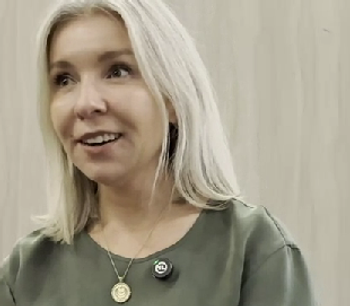
- Vol 33 No 10
- Volume 33
- Issue 10
“Doctor, Am I Gay?” A Primer on Sexual Identities
It is not unusual for patients to seek consultation with questions about their sexuality. This article provides useful definitions and clinical examples for therapists who wish to address these patient concerns.
HUMAN SEXUALITY
It is not unusual for patients to seek consultation with psychiatrists and other mental health professionals with questions about their sexuality. These questions can arise irrespective of age, gender, and actual sexual practices. They come up in people who are single-and even in those in heterosexual marriages with children. What follows are some useful definitions and clinical examples for therapists who wish to address these patient concerns.
[[{"type":"media","view_mode":"media_crop","fid":"53326","attributes":{"alt":"","class":"media-image media-image-right","id":"media_crop_2905034459696","media_crop_h":"0","media_crop_image_style":"-1","media_crop_instance":"6648","media_crop_rotate":"0","media_crop_scale_h":"194","media_crop_scale_w":"250","media_crop_w":"0","media_crop_x":"0","media_crop_y":"0","style":"float: right;","title":"© shutterstock.com","typeof":"foaf:Image"}}]]First, it is important to distinguish between sexual orientation, sexual identity, and sexual behavior. A sexual orientation is a person’s erotic response tendency or sexual attractions, be they aimed at individuals of the same sex (homosexual), the other sex (heterosexual), or both sexes (bisexual). Sex researchers call exclusive homosexual attractions a “Kinsey 6” and exclusive heterosexual attractions a “Kinsey 0.” Someone who is equally attracted to men and women is a Kinsey 3.
A sexual identity-sometimes referred to as a sexual orientation identity-refers to the subjective experiences of one’s own sexual desires, attractions, or behaviors. Sexual behavior is a descriptive term that does not account for motivation or identity. For example, the CDC tracks HIV infections using the behavioral definition of men who have sex with men (MSM) because not all MSM identify as gay.
Consider the case of Bob, a 35-year-old heterosexual married father of 4. He sought consultation because, in recent months, he had become increasingly sexually and emotionally involved with another heterosexual married man. Their wives were unaware of the relationship as the 2 men had met on a social media app. Nor were they likely to as the heterosexual couples were not close in age and traveled in very different social circles.
Bob reported fleeting, anonymous homosexual encounters since age 15 and then throughout his marriage of many years. While he and his wife were no longer sexually active, he wished to preserve their marriage and keep his family intact. Thus, he became distressed a year before the consultation when he began to think he might be “bisexual.” He was seeking professional help because he was obsessing about the other man, which made him think “I might be gay.” When asked how he had previously understood his many years of having sex with men, he sheepishly replied, “I thought I was just fooling around.”
Behaviorally, Bob had been bisexual because he was having sex with men at the same time he was having sexual relations with his wife. It was possible he had a bisexual orientation if he was aroused by the idea of having sex with both men and women. However, he readily admitted at the consultation that he had always thought about men when having sex with his wife or even when masturbating.
Is Bob gay? Not really. A gay identity usually requires some level of acceptance of one’s homosexual attractions and fantasies. Bob was in a state of panic because he was not accepting those feelings as part of his identity. How might one think about Bob’s sexual identity?
From a colloquial perspective, Bob was “in the closet,” meaning that he was hiding his homosexual self from others. However, a psychologically closeted individual is unable to acknowledge to himself that he has homoerotic feelings and fantasies. This state of mind is often retrospectively captured in the expression, “I didn’t want to admit those feelings to myself.” This was the case with Bob, who used to think of those feelings as “fooling around.” By this he meant he had thought his homosexual interests were “normal” because a normal man seeks out any sexual outlet he can find.
As Bob’s feelings for his married friend intensified, he began shifting to a homosexually self-aware identity. He was beginning to acknowledge his homoerotic or same-sex feelings and attractions to himself. The dilemma that brought him into consultation was whether he would further integrate those feelings into his identity; and if he did, how would he do so? Therapists should not take an eventual acceptance for granted. Some homosexually self-aware persons consciously struggle against accepting same-sex attractions or relationships as part of a public identity. They adopt non-gay identities-some who tried to accept those feelings but later rejected them identify as “ex-gay.”
From this perspective, Bob could be described as having a homosexual orientation and as having engaged in bisexual behavior. At the time of the consultation he appeared to be shifting between a closeted and a homosexually self-aware identity. The outcome of Bob’s sexual identity crisis is unknown because he never returned after 2 visits.
John, on the other hand, is a patient with a more common presentation of shifting sexual identities. He was 25 years old when his primary care physician referred him for treatment of an anxiety disorder characterized by a recurrent fear of having contracted HIV. This anxiety emerged after a brief homosexual experience-John’s first-with a co-worker several months earlier after both of them had gone out drinking. Although their sexual behavior, mutual masturbation, was not high-risk for contracting HIV, the patient obsessed about being seropositive. At the time of consultation, John had undergone monthly HIV tests, all of which were negative, but none of those results assuaged his anxiety. What did help were several months of treatment, including short-term benzodiazepine use, starting an antidepressant medication, and weekly psychodynamic psychotherapy.
John had been raised in a religious tradition that condemned homosexuality, and he still attended services regularly. He had dated women and had a steady girlfriend with whom he had a sexual relationship in college-despite his religion’s objections to premarital sex. Yet after his HIV anxiety diminished, an ongoing question in psychotherapy was whether he was gay. John repeatedly asked the therapist to tell him if he was.
The therapist, however, declined. He told John it was not for him to define a patient’s sexual identity and that psychotherapy was a process in which he had to decide on his own. He told John that of the many men he treated who eventually came to identify as gay, most reported feelings of sexual attraction for other boys or men from an early age. He also mentioned studies of men who experienced shifts in their sexual orientation as adults. However, the therapist did not know whether John fit into any of these categories.
The therapist, rather than defining John’s identity for him, could help his patient tolerate the anxiety of uncertainty experienced as he sorted his identity out. At times, this involved taking a didactic approach to explain contemporary theorizing and research about human sexuality. For example, the therapist told John that one homosexual experience does not make a person gay; that development of any sexual orientation is complex; that to this day, no one knows the “causes” of either heterosexuality or homosexuality; and the aforementioned differences between behavior, orientation, and identity.
Initially, the therapist saw both John’s behavior and orientation as bisexual while in a homosexually self-aware state of mind. However, the therapist was cautious about assuming the patient would adopt a gay identity. In any event, his first year of treatment rarely focused on sexual identity but instead dealt with anxieties about AIDS, work, and relationships.
After a year, John was less anxious about HIV. During one session, the therapist mentioned in passing John’s uncertain sexual identity. John responded by revealing to the surprised therapist that he had already decided months earlier that he was gay. He then provided some developmental history he had previously omitted. He acknowledged that he had childhood sexual fantasies about men and that he would think about men while having sex with his college girlfriend, his only heterosexual relationship.
John was “coming out” to his therapist. In everyday usage, coming out means telling another person that one is gay (lesbian, bisexual, transgender). However, the process is not just the interpersonal act of telling others. There are also intrapsychic aspects to the process that require integration of dissociated aspects of the self. John had been doing so on his own, without sharing his thoughts with the therapist. His internal shift in his self-identification, from homosexually self-aware to gay, could be seen as coming out to himself.
At that point, the therapist revised his assessment. He thought of John as having a homosexual, rather than a bisexual, orientation and a gay, rather than a homosexually self-aware, identity. The history of bisexual behavior remained the same.
Once John came out to himself, and as is often the case, he began a process of coming out to others-starting with his therapist. I consider the therapist’s experience of surprise as just one part of the gratifying work of letting patients come to their own conclusions at their own pace.
Disclosures:
Dr. Drescher is a psychiatrist and psychoanalyst in private practice in New York City. He reports no conflicts of interest concerning the subject matter of this article.
Articles in this issue
about 9 years ago
Brief Cognitive Behavioral Therapy Interventions for Psychosisabout 9 years ago
Exploring the Psychosis-Depression Interface: Clinical Implicationsabout 9 years ago
Outside the Pill Box: The Systems-Based Practice of PsychiatryNewsletter
Receive trusted psychiatric news, expert analysis, and clinical insights — subscribe today to support your practice and your patients.

















